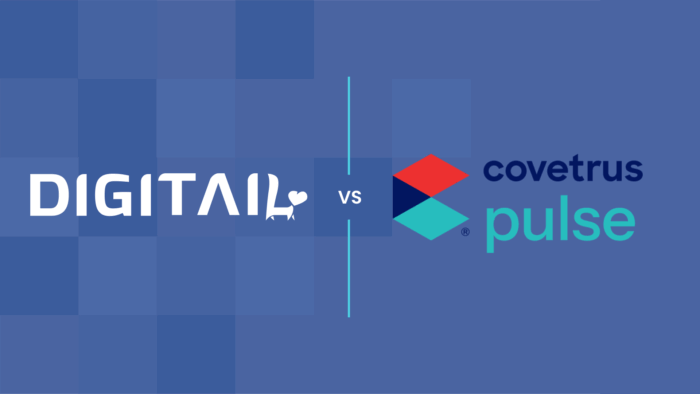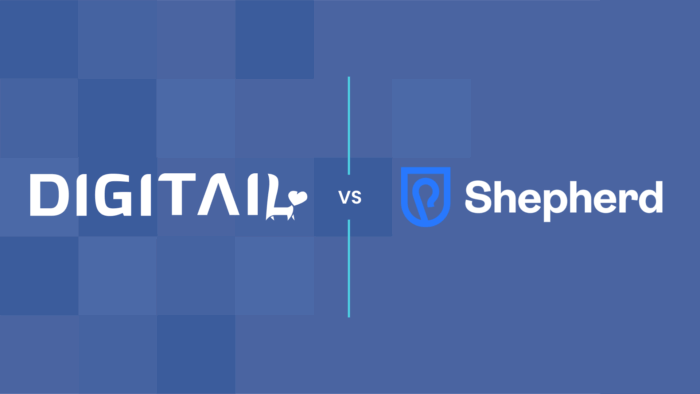
AAHA Veterinary Technician Utilization Guidelines and the Tech Empowerment Revolution
As we celebrate Veterinary Technician Week this year, let us reflect on the 2023 Technician Utilization Guidelines that the American Animal Hospital Association (AAHA) has gifted us. This comes at the heels of our recent tech empowerment webinar with Dr. Doug Cifranick, who’s proving with his high tech strategy for his mobile practice, Woof Doctor on Wheels, that empowering techs is not only socially responsible but a business imperative. Tech empowerment is more than a trend—it’s an urgent call to reframe how veterinary practices operate.
The Painful Reality: Turnover and Job Satisfaction
According to AAHA, the turnover rate for veterinarians and veterinary technicians hovers around a shocking 25%. With one applicant for every 10 job openings, the industry isn’t just understaffed; it’s grasping for talent. As the Galaxy Vets’ third annual Veterinary Burnout Survey highlights, the Professional Fulfillment Index (PFI) among Customer Service Representatives remains disturbingly low, underlining a systemic issue larger than any single role.
This isn’t breaking news. Back in 2021, During his keynote address at the Fetch dvm360 conference in San Diego, Stephen Cital emphasized the shockingly brief average career lifespan for a veterinary technician—just 5 to 7 years. Picture this: you invest in education, rack up debt, and enter a field, only to abandon it in less than a decade. Cital argued this isn’t just about job dissatisfaction; sadly, it’s a system that has fundamentally failed to support its key players. The inability to progress in careers and earn a livable wage is cited as one of the primary culprits. Yet, in his speech, Cital issued a rallying cry, urging veterinary technicians to live with the intentionality to shatter these glass ceilings, sustain well-being, and combat burnout. The message was clear: it’s high time for systemic change, but until that arrives, individual empowerment is crucial, and that was 3 years ago…
The Forgotten Variable
A study by the American Veterinary Medical Association (AVMA) reveals that job satisfaction among techs increases by over 40% when they feel adequately utilized. This reduces turnover and creates a more positive, efficient, and collaborative work environment.
This statistic is a testament to the transformative power of emotional well-being in the workplace.
Let’s talk about mental health because, guess what—it’s not just a buzzword. In a profession that grapples with euthanasia, trauma, and emotional tolls daily, feeling utilized can serve as a buffer against the brutal aspects of the job. It’s not just about keeping techs in the industry; it’s about fostering an environment where they can thrive emotionally and professionally. When techs are fulfilled, they’re more likely to stay, more likely to engage, and more likely to contribute to a positive work culture.
Furthermore, when techs are satisfied and empowered, it creates a positive feedback loop within the practice. They’re more likely to take initiative, more willing to collaborate, and more effective in their interactions with both patients and pet parents. They become not just employees but advocates and ambassadors for your practice. Their satisfaction directly translates to better patient care and customer service, which in turn increases client retention and, yes, financial stability for the practice.
Decoding AAHA’s 2023 Technician Guidelines
In any veterinary practice, the strength of the team and financial stability are paramount. The guidliness highlight both of these as main benefits to tech empowerment.

1. Talent Retention
The guidelines state loud and clear that improper utilization is a primary reason for veterinary technicians exiting the profession. When techs leave, it’s not just a staffing issue. It’s a loss of institutional knowledge, skills, and relationships formed with clients and pets. In short, the true cost is much more than a vacant chair and an employment ad. It’s a disruption that affects the practice’s ability to deliver quality care and service.
2. Financial Sustainability
For businesses keen on long-term success, it’s imperative to understand the intricacies of employee utilization, especially when it comes to CrVTs. It’s not just about enhancing profit margins—although that’s a welcomed outcome.
Think about it: the workflow becomes more efficient if veterinarians can focus on only tasks they can do and techs take on tasks that utilize their skill sets. Efficiency in practice operations translates to more patients seen, better care provided, and, ultimately, a more financially stable practice.
Translating Guidelines to Tangible Actions
Goal Worksheets
The guidelines offer the provision of goal worksheets. Utilize these to craft a roadmap that aligns your techs’ skills and career aspirations with the practice’s needs. This creates mutual benefit and a shared vision for the future. These aren’t just ‘to-dos’; they are the blueprint for ‘how-tos’.
Workflows by Role
The guidelines offer workflows delineated by roles within the practice. Customizing these for your specific needs is instrumental. Every practice has unique requirements and client expectations. Tailor the workflows to ensure every team member’s skills are optimally leveraged. Do vets need to perform tasks that a credentialed tech can handle? Probably not. Reallocating such tasks frees vets to focus on complex cases, thus better serving the clientele and boosting revenue.
Veterinary Team Member Utilization Assessment Tools
What you can’t measure, you can’t manage. The assessment tools in the guidelines allow you to evaluate your current state of tech utilization. It might sting to see the gaps, but it’s the first step in optimization. The data derived from these assessments can help you set KPIs, identify bottlenecks, and reveal opportunities for immediate improvement.
Communication
The guidelines suggest asking open-ended questions to promote dialogue around utilization. This isn’t just HR fluff; it’s the cornerstone of creating a culture of openness and mutual respect. Techs have insights into the daily workings of the practice that can be invaluable. By encouraging open dialogue, you’re not just solving problems but avoiding future ones.
Training and Implementation: Do it Right, Do it Once
This is where most guidelines go to die—on the precipice of actual execution. Make a commitment to train your team on these new protocols. It will take time and possibly some investment, but the benefits are clear and far beyond profitability.
Why Technology Matters when it comes to Technician Empowerment
As the veterinary field advances, technology has taken center stage, streamlining processes for the entire team. For technicians especially, this wave of innovation proves invaluable, amplifying their role and refining their daily operations. Integrating technologies like cloud-based access anywhere Practice Management Systems (PIMS) and Artificial Intelligence (AI) can offer countless ways to increase efficiency in veterinary practice.
Integrated calendar functionalities within PIMS allow for the management of appointments, but when coupled with AI, there’s potential for automatic scheduling of follow-ups based on diagnostic outcomes. A flowboard in a veterinary system provides a real-time overview of patient statuses, serving as an essential tool for day-to-day operations. Advanced communication features, such as real-time note-sharing and colleague notifications, optimize the relaying of diagnostic or treatment insights.
When integrated with AI capabilities, this feature can further assist in organizing and interpreting vast amounts of patient data. AI can efficiently break down and summarize comprehensive patient histories, making the information more accessible for quick reviews. Additionally, by analyzing the symptoms recorded, AI can suggest possible differentials, aiding in the diagnostic process. AI-powered Chatbots can be invaluable for prescreening patients and collecting preliminary data before the consultation—AI, can auto-generate comprehensive and personalized insights based on the diagnosis and treatment provided. In essence, the seamless amalgamation of PIMS and AI not only augments the efficiency and precision of technicians but also ushers in a new era of veterinary care—where technology works hand-in-hand with human expertise to achieve optimal patient outcomes.



An Industry on the Cusp of Change?
Embracing these guidelines would initiate a profound shift in industry standards. As someone who genuinely wants to help elevate this profession, I see these guidelines not as suggestions but as vital steps towards a more equitable, efficient, and humane veterinary industry. We’re standing at the threshold of an era where veterinary techs are seen, heard, empowered, and optimally utilized.
Now more than ever, it’s time to get off the sidelines and get into the game. Because when we empower our techs, everybody wins—especially our furry friends.
Let’s make this Tech Week the start of something revolutionary.



